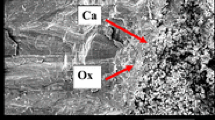Summary
The state of saturation of urine with calcium salts has been estimated by means of a computer model system whose accuracy has been improved by the use of stability constants of 31 complexes which were re-determined at 37°C and at the actual ionic strength of urine. The experimental determination of the concentration solubility products of calcium oxalate monohydrate (CaOx) and of calcium hydrogen phosphate dihydrate (bsh) allows an expression of the saturation degree as free concentration product ratio βCaOx and βbsh. Morning urine samples from 50 healthy controls and 50 idiopathic calcium stone-formers and 24 h urines from 40 normal subjects and 192 stoneformers, taking normal diet were investigated by this technique. From our results urine supersaturation with calcium oxalate salts seems to play an important role in calcium stone disease. Hypercalciuria and hyperoxaluria seem to be the main pathological features in this regard. The data concerning βbsh values have not confirmed previous reports in which this parameter was found to be increased in stone-formers.
Similar content being viewed by others
References
Daniele PG, Marangella M (1981) Equilibrium based computer model for the estimation of urine saturation. In: Smith LH, Robertson WG, Finlayson B (eds) Urolithiasis clinical and basic research. Plenum press, New York London, pp 437–440
Daniele PG, Marangella M (1982) Ionic equilibria in urine: a computer model system improved by accurate stability constant values. Ann Chim 72:25–38
Davies CW (1962) Ion association. London, Butterworth
Erwin DT, Roberts JA, Sledge G, Bennet DJ, Finlayson B (1976) Estimating urine saturation, a comparision of results of two methods evaluating changes induced by drinking milk. In: Fleisch H, Robertson WG, Smith LH, Vahlensieck W (eds) Urolithiasis research. Plenum Press, New York London, pp 437–440
Finlayson B (1978) Physicochemical aspects of urolithiasis. Kidney Int 13:344–360
Gill WB, Silvert MA, Roma MS (1974) Supersaturation levels and crystallization rates of calcium oxalate from urines of normal humans and stone formers determined by a 14C-Oxalate technique. Invest Urol 12:203–209
Marangella M, Bruno M, Fruttero B, Linari F (1981) Oxalic acid lithiasis and the hyperoxaluric syndromes. In: Pavone-Macaluso M, Smith PH (eds) Advances in nephro-urology. Plenum Press, New York London, pp 345–355
Nancollas GH (1976) The kinetics of crystal growth and renal stone formation. In: Fleisch H, Robertson WG, Smith LH, Vahlensieck W (eds) Urolithiasis research. Plenum Press. New York London, pp 5–23
Pak CYC (1969) Physicochemical basis for formation of renal stones of calcium phosphate origin: Calculation of the degree of saturation of urine with respect to brushite. J Clin Invest 48:1914–1922
Pak CYC, Eanes ED, Ruskin B (1971) Spontaneous precipitation of brushite: evidence that brushite is the nidus of renal stones originating as calcium phosphate. Proc Natl Acad Sci USA 68:1456–1460
Pak CYC, Holt K (1976) Nucleation and growth of brushite and calcium oxalate in urine of stone-formers. Metabolism 25: 665–673
Pak CYC, Hayashi Y, Finlayson B (1977) Estimation of the state of saturation of brushite and calcium oxalate in urine: a comparison of three methods. J Clin Lab Invest 89:891–901
Pylipchuk G, Ehrig U, Wilson DR (1979) Idiopathic calcium nephrolithiasis. 1. Differences in urine crystalloids, urine saturation with brushite, and urine inhibitors of calcification between persons with and persons without recurrent kidney stone formation. CMA J 120:658–663
Robertson WG, Peacock M, Nordin BEC (1968) Activity products in stone-forming and non stone-forming urine. Clin Sci 34:579–594
Robertson WG, Peacock M, Nordin BEC (1971) Calcium oxalate crystalluria and urine saturation in recurrent renal stone-formers. Clin Sci 40:365–374
Robertson WG, Peacock M, Marshall RW, Marshall DH, Nordin BEC (1976) Saturation-inhibition index as a measure of the risk of calcium oxalate stone formation in the urinary tract. New Engl J Med 294:249–252
Weber DV, Coe FL, Parks JH, Dunn MSL, Tembe V (1979) Urinary saturation measurements in calcium nephrolithiasis. Ann Int Med 90:180–184
Yarbro CL (1958) Studies on the mechanism of formation of renal calculi: part II. J Urol 80:10–12
Author information
Authors and Affiliations
Rights and permissions
About this article
Cite this article
Marangella, M., Daniele, P.G., Ronzani, M. et al. Urine saturation with calcium salts in normal subjects and idiopathic calcium stone-formers estimated by an improved computer model system. Urol. Res. 13, 189–193 (1985). https://doi.org/10.1007/BF00261822
Accepted:
Issue Date:
DOI: https://doi.org/10.1007/BF00261822




